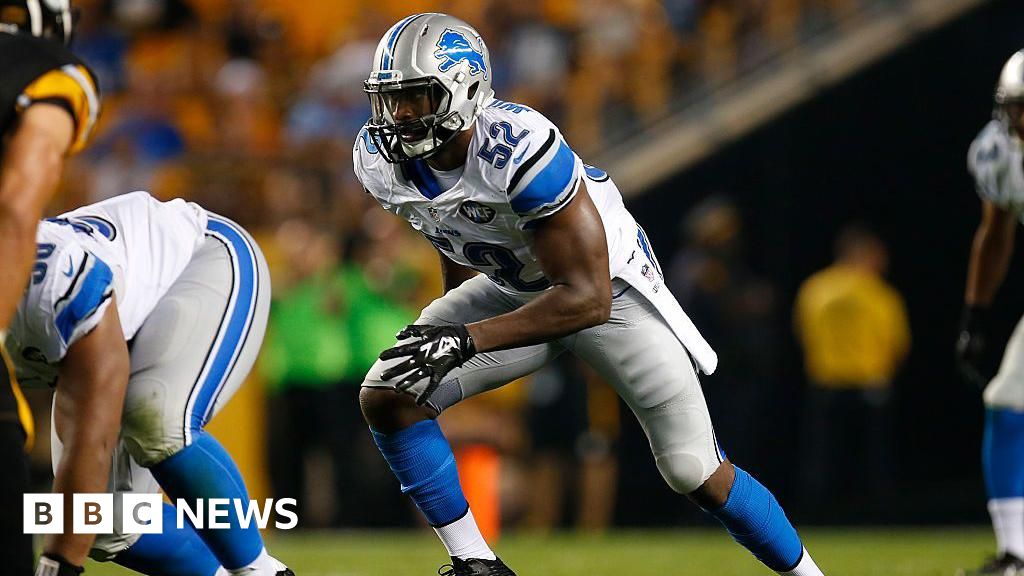ARTICLE AD BOX
 Image source, Getty Images
Image source, Getty Images
By David Brown, Jake Horton & Tural Ahmedzade
BBC News
Nato members have pledged to send more ammunition to Ukraine, to make sure its armed forces don't run short.
The US, the UK and Germany are also sending tanks, and Germany is allowing other Western countries to send German-made tanks from their fleets.
However, no Nato country has yet agreed to requests from Ukraine to send fighter jets.
Tanks
Ukraine's President Volodomyr Zelensky has said his forces need Western battle tanks urgently to defend its territory and to push Russian troops out of occupied areas.
The US is sending 31 of its Abrams tanks, the UK is providing 14 Challenger 2 tanks and Germany,14 Leopards 2 tanks.
The Leopard 2 is used by a number of European countries, and is considered to be easier to maintain and more fuel-efficient than most other Western tanks.
In the months which followed the Russian invasion, Nato preferred member countries to supply Ukraine with tanks which had been in use in the former Warsaw Pact,
Ukraine's armed forces know how to operate them, and how to maintain them, and had a lot spare parts for them.
Western tanks are more complicated to operate and harder to maintain.
However, Kyiv believes its forces are now in a position where they can use Nato tanks.
The UK led the way in Nato by offering to provide the Challenger 2 - its main battle tank.
The Challenger 2 was built in the 1990s, but is significantly more advanced than other tanks available to Ukraine's armed forces.
Ukraine used Warsaw Pact designed T-72 tanks prior to the invasion, and since February 2022 has received more than 200 T-72s from Poland, the Czech Republic and a small number of other countries.
Announcing the US decision to send 31 Abrams tanks to Ukraine, President Joe Biden described them as "the most capable tanks in the world".
He said the US would start training Ukrainian soldiers to use them immediately but it remains unclear how long it will be until the tanks themselves are delivered.
The BBC's Gary O'Donoghue in Washington says the funding process for the tanks means they may not be deployed for several months.
Combat vehicles
Military professionals point out that success on the battlefield requires a vast range of equipment, deployed in coordination, with the necessary logistical support in place.
The Stryker is one of the many armoured vehicles that have been donated to Ukraine. The US recently confirmed that 90 Strykers would soon be dispatched.
Among the other vehicles donated by the US recently were 59 more Bradley infantry fighting vehicles. They were used extensively by US forces in Iraq.
Air defences
In December, the US also announced it was sending the Patriot missile system to Ukraine - and Germany and the Netherlands have recently followed suit.
This highly sophisticated system has a range of up to 62 miles (100km), depending on the type of missile used, and requires specialised training for Ukrainian soldiers, likely to be carried out at a US Army base in Germany.
But the system is expensive to operate - one Patriot missile costs around $3m.
Since the start of the conflict, Ukraine has been using Soviet-era S-300 surface-to-air systems against Russian attacks.
Before the conflict began in February, Ukraine had about 250 S-300s and there have been efforts to replenish these with similar systems stockpiled in other former Soviet countries, with some coming from Slovakia.
The US has also provided Nasams (National Advanced Surface-to-Air Missile System) to Ukraine. The first Nasams arrived in Ukraine in November.
In addition, the UK has provided several air defence systems, including Starstreak, designed to bring down low-flying aircraft at short range.
Long-range rockets
Among the long-range rocket launchers sent to Ukraine by the US are the M142 High Mobility Artillery Rocket System or Himars. Several European countries have also sent similar systems.
Himars are believed to have been central to Ukraine's success in pushing Russian forces back in the south, particularly in Kherson in November.
Crucially, the range of Himars, and many other systems, varies according to the munitions used, and it is believed that western donors have not provided the ammunition with the longest range.
The munitions thought to have been supplied to Ukraine give the system a range of about 50 miles (80km), which is further than the Smerch system on the Russian side.
Himars systems are also much more accurate than the equivalent Russian systems.
Howitzers
In the months following the invasion and Russia's retreat from Kyiv, much of the war centred on the east of the country where supplies of artillery to Ukraine were in heavy demand.
Australia, Canada and the US were among the countries to send advanced M777 howitzers and ammunition to Ukraine.
The range of the M777 is similar to Russia's Giatsint-B howitzer, and much longer than Russia's D-30 towed gun.
Nato countries say they are planning to ramp up their supply of shells, because Ukraine has been using them much at a faster rate than they are being delivered.
They are asking their domestic manufacturers to increase production.
Anti-tank weapons
Thousands of Nlaw weapons, designed to destroy tanks with a single shot, have also been supplied to Ukraine.
The weapons are thought to have been particularly important in stopping the advance of Russian forces on Kyiv in the hours and days following the invasion.
Drones
Drones have featured heavily in the conflict so far, with many used for surveillance, targeting and heavy lift operations.
Turkey has sold Bayraktar TB2 armed drones to Ukraine in recent months, whilst the Turkish manufacturer of the system has donated drones to crowd-funding operations in support of Ukraine.
Analysts say the Bayraktar TB2s have been extremely effective, flying at about 25,000 feet (7,600m) before descending to attack Russian targets with laser-guided bombs.
Why are Nato countries not providing fighter jets?
Ukraine has asked Nato countries to send fighter jets such as the US-made F-16 Fighting Falcon.
No country has yet agreed.
One reason is that it takes a long time to train pilots to fly fighter jets, and they need a lot of maintenance.
Nato countries are also worried that if Ukraine used their fighter jets to attack targets inside Russia, it might draw them further into the war.
Additional reporting by Tom Spencer. Graphics by Gerry Fletcher and Sana Dionysiou.

 1 year ago
57
1 year ago
57








 English (US)
English (US)